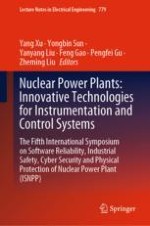This book is a compilation of selected papers from the fifth International Symposium on Software Reliability, Industrial Safety, Cyber Security and Physical Protection of Nuclear Power Plant, held in November 2020 in Beijing, China. The purpose of this symposium is to discuss Inspection, test, certification and research for the software and hardware of Instrument and Control (I&C) systems in nuclear power plants (NPP), such as sensors, actuators and control system. It aims to provide a platform of technical exchange and experience sharing for those broad masses of experts and scholars and nuclear power practitioners, and for the combination of production, teaching and research in universities and enterprises to promote the safe development of nuclear power plant. Readers will find a wealth of valuable insights into achieving safer and more efficient instrumentation and control systems.
